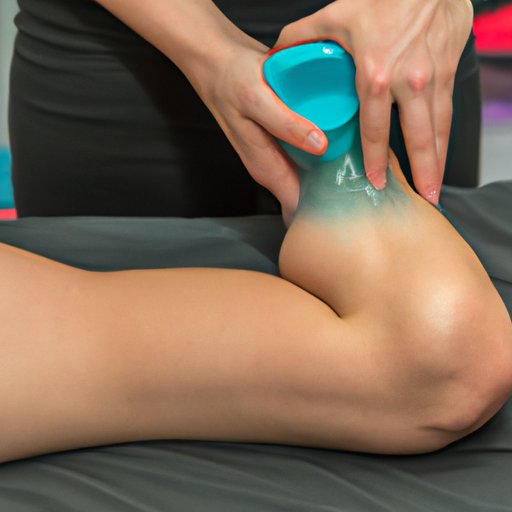Introduction
Muscle soreness is a normal physiological response to exercise, particularly if it involves new or intense movements that your body is not used to. It is also known as delayed onset muscle soreness (DOMS) and usually occurs 24-72 hours after exercise. DOMS is caused by small tears in the muscle fibers, which lead to inflammation and pain.
Stretching
Stretching is one of the best ways to prevent and relieve muscle soreness. It helps to increase blood flow to the muscles, improve flexibility, and reduce tension. Here are different types of stretches that you can try:
- Static stretching: Hold each stretch for 10-30 seconds without bouncing or jerking.
- Dynamic stretching: Perform each stretch in a fluid motion, such as leg swings or arm circles.
- PNF stretching: Use a partner to resistance during stretching and relaxing stages.
- Fascial stretching: Slowly stretch a specific muscle while applying pressure to fascia.
Before you start stretching, it’s essential to warm up your body first. Begin with light cardio exercise for 5-10 minutes, such as jogging or jumping jacks. Follow these instructions carefully to perform each stretch properly:
Massage
Massage is another effective way to relieve muscle soreness. It helps to increase blood flow to the muscles, reduce inflammation, and release tension. There are different types of massages, including Swedish, deep tissue, and sports massage.
If you can’t get a professional massage, don’t worry. You can use a foam roller or self-massage techniques to relieve muscle soreness at home. Here are some tips on how to do it:
Hydration
Staying hydrated is crucial for preventing muscle soreness. When you exercise, your body loses water through sweat, and it’s essential to replace it to prevent dehydration. Water is also necessary for delivering oxygen and nutrients to your muscles for energy production.
According to the American Council on Exercise, it’s recommended to drink 17-20 ounces of water two hours before exercising and continue to drink 7-10 ounces of water every 10-20 minutes during exercise. After exercise, drink an additional 16-24 ounces per pound of body weight lost during exercise.
Other ways to stay hydrated include eating foods high in water content, such as fruits and vegetables, and avoiding alcohol and caffeinated drinks that can dehydrate you.
Rest and Recovery
Rest and recovery are essential for preventing and treating muscle soreness. When you exercise, your muscles undergo physical stress and need time to repair and rebuild. Overworking your muscles without giving them enough time to rest can lead to injury and increased muscle soreness.
It’s crucial to incorporate rest days into your fitness routine, where you allow your muscles to recover. You can also add active recovery days, where you engage in light exercise such as yoga or swimming. Additionally, getting enough sleep and proper nutrition can help speed up the recovery process and reduce muscle soreness.
Heat and Cold Therapy
Heat and cold therapy are effective ways to relieve muscle soreness and inflammation. Heat therapy, such as a warm bath or heating pad, helps to increase blood flow to the muscles and reduce stiffness. Cold therapy, such as an ice pack or cold bath, helps to reduce inflammation and numb pain.
It’s essential to use these therapies correctly to avoid injury or further damage to your muscles. For example, you should not use heat therapy on acute injuries as it can increase inflammation. Similarly, you should not use cold therapy for longer than 20 minutes as it can cause tissue damage.
Preventive Measures
Preventing muscle soreness in the first place is always better than treating it. Here are some tips to prevent muscle soreness:
- Use proper form when exercising
- Wear the right shoes for your activity
- Warm-up before exercising and cool-down afterwards
- Gradually increase the intensity and duration of your workouts
- Stretch before and after each workout
Conclusion
Muscle soreness is a normal part of exercise, but it doesn’t have to be a hindrance to your physical activity. By incorporating stretching, massage, hydration, rest and recovery, heat and cold therapy, and preventive measures, you can reduce muscle soreness and improve your overall fitness experience.
Remember to always listen to your body and adjust your routine as needed. If you continue to experience persistent muscle soreness, consult with your doctor or physical therapist for further evaluation.
Additional Resources
For more information, please visit the following resources:
- Healthline: Delayed-Onset Muscle Soreness
- WebMD: Massage for Sore Muscles – It Works But Isn’t a Cinch
-
(Note: Is this article not meeting your expectations? Do you have knowledge or insights to share? Unlock new opportunities and expand your reach by joining our authors team. Click Registration to join us and share your expertise with our readers.)
